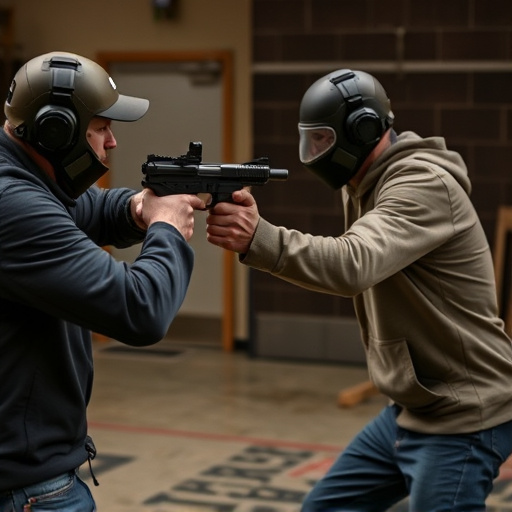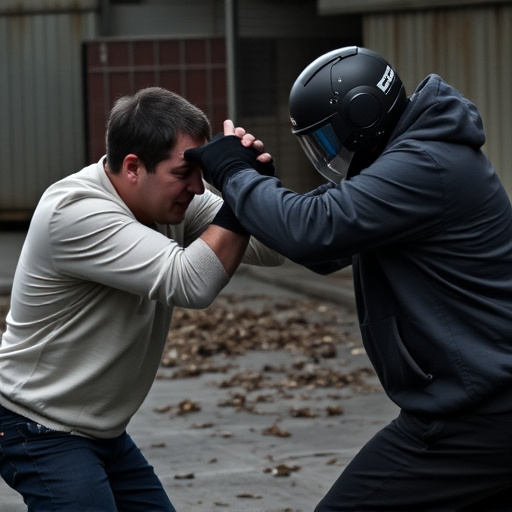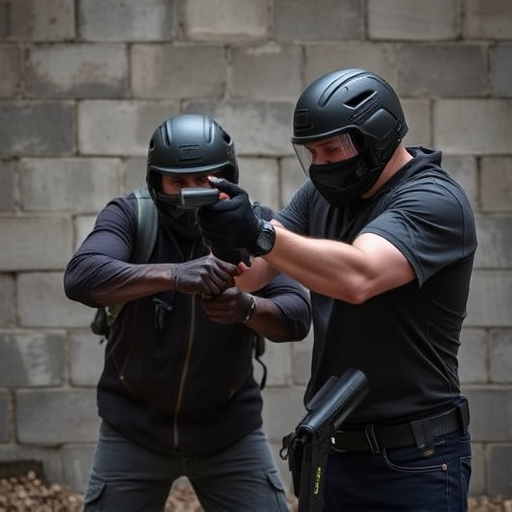Weather-resistant stun guns protect users from environmental damage and mitigate neurological side effects like temporary disorientation and memory lapses caused by electrical current impact on the nervous system. Prioritize robust construction with corrosion-resistant materials, high voltage, and legal compliance for effective outdoor protection while ensuring safe handling and understanding local regulations to avoid risks.
In today’s diverse outdoor environments, choosing a weather-resistant stun gun is crucial for personal safety. Understanding the nuances of weather resistance in these devices is essential, especially considering potential neurological side effects associated with their use. This article delves into the factors that make stun guns suitable for outdoor use, from key features to legal responsibilities, helping users navigate the market and make informed decisions regarding self-defense tools while addressing critical aspects like neurological impacts.
- Understanding Weather Resistance in Stun Guns
- Neurological Impacts: Potential Side Effects Revealed
- Choosing Models: Key Features for Outdoor Use
- Safety Measures: Handling and Training Considerations
- Legal Aspects: Regulations and Responsibilities
Understanding Weather Resistance in Stun Guns

Weather resistance in stun guns is a critical factor, often overlooked but crucial for their effectiveness and longevity. These devices are designed to be carried and used in various environments, from bustling cities to remote outdoor areas, where exposure to harsh weather conditions is inevitable. Therefore, understanding the level of protection offered by different models against elements like rain, snow, dust, and extreme temperatures is essential for consumers.
The stun gun’s construction plays a significant role in its weather resistance. Models with robust, water-resistant housing made from durable materials like aircraft-grade aluminum or stainless steel can withstand exposure to moisture better. Additionally, waterproof seals around electrical components ensure that the stun gun’s internal machinery remains protected from potential damage caused by rain or submersion. Knowing these features is vital when considering the potential neurological side effects of a stun gun, as proper weather resistance ensures the device operates reliably in any condition.
Neurological Impacts: Potential Side Effects Revealed

Stun guns, while effective for self-defense, have been a subject of debate due to their potential neurological side effects. The electrical current delivered by these devices affects the nervous system, temporarily paralyzing the target. However, some studies suggest that repeated or prolonged exposure to stun gun jolts could lead to lasting neurological damage. These impacts may include temporary disorientation, memory lapses, and even more severe conditions like seizures or long-term cognitive impairments.
The exact mechanisms behind these side effects are not fully understood, but it’s clear that the high-voltage, low-current shocks disrupt neural pathways. Individuals with pre-existing neurological conditions or those taking certain medications may be at higher risk. As such, it’s crucial to consider the potential risks associated with stun gun use and consult healthcare professionals for personalized advice.
Choosing Models: Key Features for Outdoor Use

When considering weather-resistant stun guns for outdoor use, several key features should be at the forefront of your decision-making process. Firstly, look for models with robust construction that can withstand varying climates and environmental conditions. This includes sturdy housing made from corrosion-resistant materials like aircraft-grade aluminum or durable plastics. Such designs ensure the stun gun’s longevity, even when exposed to rain, humidity, or extreme temperatures.
Additionally, pay close attention to the stun gun’s power source and energy output. Models with high voltage and powerful electrical charges are more effective in neutralizing potential threats, especially in outdoor scenarios where distance and visibility might be limited. However, it’s crucial to consider the neurological side effects of stun guns, such as temporary paralysis and disorientation, which can last for several minutes. Ensure the device you choose complies with legal requirements regarding charge levels and safety features to minimize risks while maximizing effectiveness.
Safety Measures: Handling and Training Considerations

When considering a weather-resistant stun gun, it’s crucial to understand that proper handling and training are key to ensuring safety. Beyond understanding the device’s range, voltage, and activation mechanisms, users must be aware of potential neurological side effects associated with stun guns, such as temporary muscle weakness, disorientation, or even seizures in rare cases. Therefore, comprehensive training should cover not just how to deploy the stun gun effectively but also how to recognize and respond to these complications.
Regular practice sessions can help users develop a solid muscle memory for activation and proper grip. Additionally, it’s essential to discuss and role-play various scenarios with a trained professional to ensure users are prepared for real-life situations. Remember that while stun guns offer personal protection, their effectiveness relies heavily on the user’s ability to deploy them accurately and responsibly in emergency or self-defense situations.
Legal Aspects: Regulations and Responsibilities

When considering a weather-resistant stun gun, it’s crucial to understand the legal aspects and regulations that govern their use. The legality of stun guns varies significantly from one region to another, with some areas having strict controls on their possession and deployment. Users must be well-informed about the specific laws in their locale to avoid legal repercussions.
Additionally, responsibilities extend beyond compliance with local statutes. It’s important to recognize that stun guns, while non-lethal, can still cause neurological side effects if misused or used inappropriately. Users should be trained and aware of safe handling practices to minimize risks and ensure the device is employed only as a last resort for self-defense.
When selecting a weather-resistant stun gun, prioritize models designed to withstand outdoor elements while understanding potential neurological side effects. By considering key features, safety measures, and legal aspects, you can make an informed decision. Remember, responsible use requires proper training and awareness of local regulations regarding stun guns, especially in light of their potential neurological impacts.
